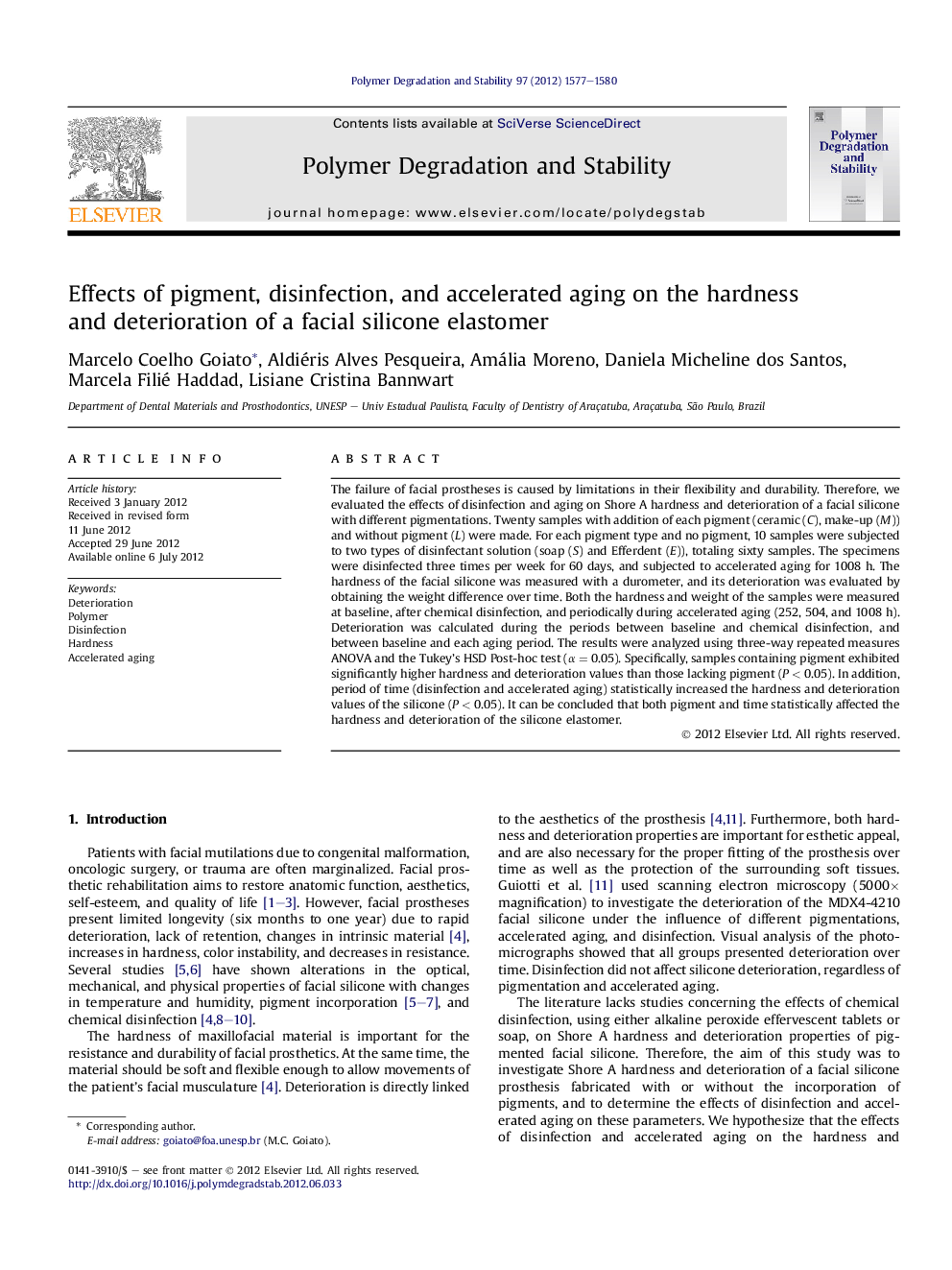| Article ID | Journal | Published Year | Pages | File Type |
|---|---|---|---|---|
| 5202725 | Polymer Degradation and Stability | 2012 | 4 Pages |
Abstract
The failure of facial prostheses is caused by limitations in their flexibility and durability. Therefore, we evaluated the effects of disinfection and aging on Shore A hardness and deterioration of a facial silicone with different pigmentations. Twenty samples with addition of each pigment (ceramic (C), make-up (M)) and without pigment (L) were made. For each pigment type and no pigment, 10 samples were subjected to two types of disinfectant solution (soap (S) and Efferdent (E)), totaling sixty samples. The specimens were disinfected three times per week for 60 days, and subjected to accelerated aging for 1008 h. The hardness of the facial silicone was measured with a durometer, and its deterioration was evaluated by obtaining the weight difference over time. Both the hardness and weight of the samples were measured at baseline, after chemical disinfection, and periodically during accelerated aging (252, 504, and 1008 h). Deterioration was calculated during the periods between baseline and chemical disinfection, and between baseline and each aging period. The results were analyzed using three-way repeated measures ANOVA and the Tukey's HSD Post-hoc test (α = 0.05). Specifically, samples containing pigment exhibited significantly higher hardness and deterioration values than those lacking pigment (P < 0.05). In addition, period of time (disinfection and accelerated aging) statistically increased the hardness and deterioration values of the silicone (P < 0.05). It can be concluded that both pigment and time statistically affected the hardness and deterioration of the silicone elastomer.
Related Topics
Physical Sciences and Engineering
Chemistry
Organic Chemistry
Authors
Marcelo Coelho Goiato, Aldiéris Alves Pesqueira, Amália Moreno, Daniela Micheline dos Santos, Marcela Filié Haddad, Lisiane Cristina Bannwart,
